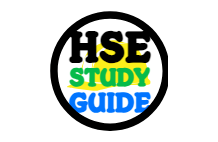
10 IOSH Managing Safely Interview Questions with Sample Answers (+ Tips)
1. What is the purpose of IOSH Managing Safely?
Sample Answer:
“The purpose of IOSH Managing Safely is to provide managers and supervisors with the knowledge and skills to handle health and safety responsibilities effectively. It helps them assess risks, implement control measures, and foster a safer workplace while complying with legal requirements.”
Tip:
- Emphasize its practical application for non-safety professionals.
2. How would you conduct a risk assessment?
Sample Answer:
*”I would follow the five key steps:
- Identify hazards (e.g., machinery, chemicals).
- Determine who might be harmed and how.
- Evaluate risks and existing controls.
- Record findings and implement improvements.
- Review and update the assessment regularly.”*
Tip:
- Mention real-world examples if possible.
3. What are the key responsibilities of a manager under health and safety law?
Sample Answer:
“Managers must ensure a safe working environment by identifying hazards, providing training, enforcing safety policies, and complying with regulations like the Health and Safety at Work Act. They must also investigate incidents and promote a strong safety culture.”
Tip:
- Reference specific laws (e.g., HSWA 1974, Management Regulations 1999).
4. How would you promote a positive safety culture?
Sample Answer:
“By leading by example, encouraging open communication about hazards, providing regular training, recognizing safe behaviors, and involving employees in safety discussions and decision-making.”
Tip:
- Highlight teamwork and continuous improvement.
5. What is the difference between a hazard and a risk?
Sample Answer:
“A hazard is something with the potential to cause harm (e.g., wet floors), while risk is the likelihood and severity of harm occurring (e.g., slipping on the wet floor).”
Tip:
- Use simple, relatable examples.
6. How would you handle an accident investigation?
Sample Answer:
“I would secure the scene, provide first aid, gather evidence (witness statements, photos), identify root causes, and implement corrective actions to prevent recurrence, all while complying with reporting requirements (RIDDOR if applicable).”
Tip:
- Stress the importance of a blame-free approach.
7. What are common workplace hazards, and how would you control them?
Sample Answer:
“Common hazards include slips/trips, manual handling, and electrical risks. Controls could involve proper housekeeping, mechanical aids, PPE, and training.”
Tip:
- Link hazards to hierarchy of controls (elimination, substitution, engineering controls, etc.).
8. Why is worker involvement important in safety management?
Sample Answer:
“Employees often spot risks first-hand. Involving them improves hazard identification, compliance, and morale, creating a proactive safety culture.”
Tip:
- Mention tools like safety committees or suggestion schemes.
9. How does IOSH Managing Safely align with legal requirements?
Sample Answer:
“It covers key legislation like the Health and Safety at Work Act and helps managers understand their duties to conduct risk assessments, provide training, and ensure workplace safety.”
Tip:
- Briefly cite relevant regulations (e.g., PUWER, COSHH).
10. How would you measure the effectiveness of safety measures?
Sample Answer:
“Through KPIs like accident rates, near-miss reports, audit results, and employee feedback. Regular reviews ensure continuous improvement.”
Tip:
- Discuss both lagging (accidents) and leading (training completion) indicators.
🎯 Extra Tips for Acing the Interview
📌 Before the Interview
- Review the IOSH Managing Safely Syllabus – Refresh key modules like risk assessment, hazard control, and legal responsibilities.
- Research the Company’s Safety Policies – Check their website for H&S reports or past incidents to tailor your answers.
- Prepare Real-Life Examples – Think of past experiences where you improved safety (e.g., introduced a new control measure).
- Understand Industry-Specific Risks – If applying for construction, manufacturing, etc., know common hazards in that sector.
- Practice with Mock Interviews – Record yourself answering questions to improve clarity and confidence.
💡 During the Interview
- Use the “STAR” Technique (Situation, Task, Action, Result) for scenario-based questions.
- Example: “A worker was not wearing PPE (Situation). I ensured they were trained (Action), reducing repeat violations (Result).”
- Showcase Proactive Thinking – Mention how you’d go beyond compliance (e.g., safety campaigns, toolbox talks).
- Link Answers to Legal Frameworks – Drop relevant laws (e.g., “Under RIDDOR, I’d report a major injury within 15 days.”).
- Ask Insightful Questions –
- “How does the company measure safety performance?”
- “What safety initiatives are currently in place?”
- Stay Calm & Structured – If unsure, say: “Let me think through this systematically…”
✅ After the Interview
- Send a Follow-Up Email – Thank them and briefly reinforce your commitment to safety.
- Reflect on Weak Spots – Note any questions you struggled with and research them for next time.
🔥 Bonus: Quick Wins to Stand Out
✔ Mention IOSH’s “Plan-Do-Check-Act” model when discussing safety improvements.
✔ Highlight Cost-Benefit of Safety – “Investing in PPE reduces long-term injury costs.”
✔ Use Numbers – “Reduced incidents by 30% after implementing X measure.”
15 NEBOSH Interview Questions & Answers for Safety Officers
20 HSE Manager Interview Questions for Experienced Professionals with Sample Answers
25 Construction Safety Interview Questions & How to Answer Them
Top 30 OSHA Interview Questions & Expert Answers
50+ Safety Officer Interview Questions & Answers (2025 Edition)
























